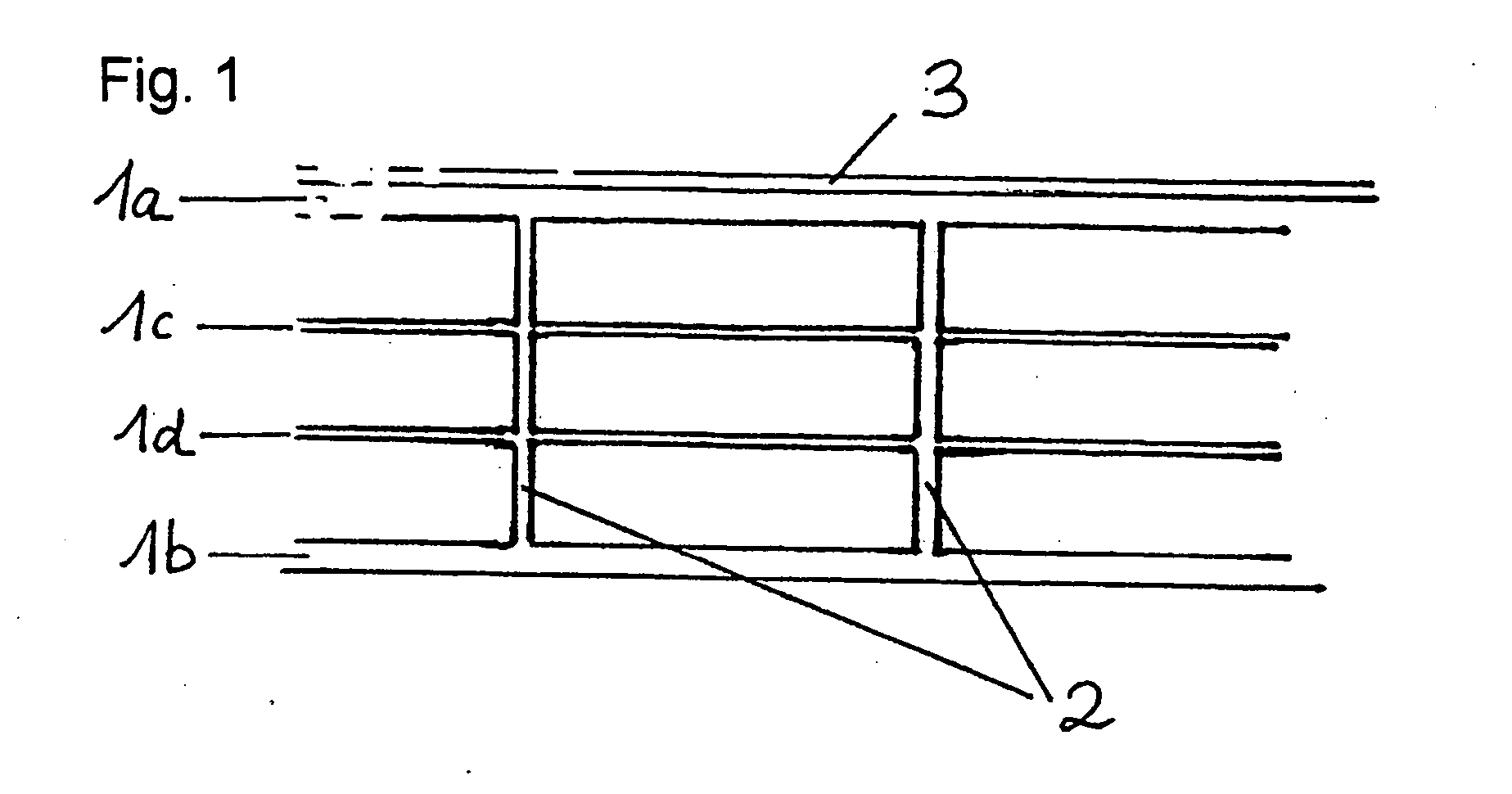Plastic body having low thermal conductivity, high light transmission and a capacity for absorption in the near-infrared region
a near-infrared region and light transmission technology, applied in the field of plastic body having low thermal conductivity, high light transmission and a capacity for absorption in the near-infrared region, can solve the problems of heat absorbed into the plastics matrix, non-specifically in all directions, and increase the temperature of the entire plastics article, so as to reduce the total energy transmittance , the effect of reducing the total energy transmittan
- Summary
- Abstract
- Description
- Claims
- Application Information
AI Technical Summary
Benefits of technology
Problems solved by technology
Method used
Image
Examples
example 1
[0059] The IR absorber used comprised a copper phosphate complex. This was prepared by stirring 20 g of methacryloyloxyethyl phosphate (MOEP) with 5 g of copper(II) carbonate (CCB) and 1 g of H.sub.2O in 260 g of methyl methacrylate for 30 min at from 50.degree. C. to 60.degree. C. and then for 4 h at room temperature, followed by filtration. 0.05% of 2,2'-azobis(isobutyronitrile) (AIBN) was then added, and the mixture was polymerized for 17 hours at -40.degree. C. between 2 glass sheets separated by 10 mm. The finished polymethyl methacrylate (PMMA) sheet is transparent and has a pale blue color. The light transmittance [T(D65)], total energy transmittance [g], and selectivity coefficient [T / g] to DIN 67 507 of this sheet were determined. Furthermore, from this sheet and [sic] 3 mm-thick IR-absorber-free polymethyl methacrylate composite systems were produced, the sheet separation in these being 16 mm, and the abovementioned values were likewise determined from these composite syst...
example 2
[0061] A quadruple-web sandwich panel (thickness 32 mm) composed of impact-modified polymethyl methacrylate (PMMA) was extruded with a coextrusion layer of thickness 100 .mu.m on the upper web. The coextrusion layer composed of PMMA comprises 0.26% of the IR absorber of quaterrylene tetracarboximide compound type (Uvinul.RTM. 7790 IR). The table below lists light transmittance, total energy transmittance, and selectivity coefficient for the individual upper web, upper web and lower web, upper web, one intermediate web and lower web, upper web two intermediate webs and lower web.
2 Light Selectivity Number of transmittance Total energy coefficient sheets (D65) transmittance g T / g Upper web 78% 67.8% 1.15 Upper web + lower web 72% 58.5% 1.23 Upper web + intermediate 67% 54% 1.25 web + lower web Upper web + 2 63% 50% 1.26 intermediate webs + lower web
PUM
| Property | Measurement | Unit |
|---|---|---|
| heat transfer coefficient | aaaaa | aaaaa |
| light transmittance | aaaaa | aaaaa |
| light transmittance | aaaaa | aaaaa |
Abstract
Description
Claims
Application Information
 Login to View More
Login to View More - R&D
- Intellectual Property
- Life Sciences
- Materials
- Tech Scout
- Unparalleled Data Quality
- Higher Quality Content
- 60% Fewer Hallucinations
Browse by: Latest US Patents, China's latest patents, Technical Efficacy Thesaurus, Application Domain, Technology Topic, Popular Technical Reports.
© 2025 PatSnap. All rights reserved.Legal|Privacy policy|Modern Slavery Act Transparency Statement|Sitemap|About US| Contact US: help@patsnap.com


